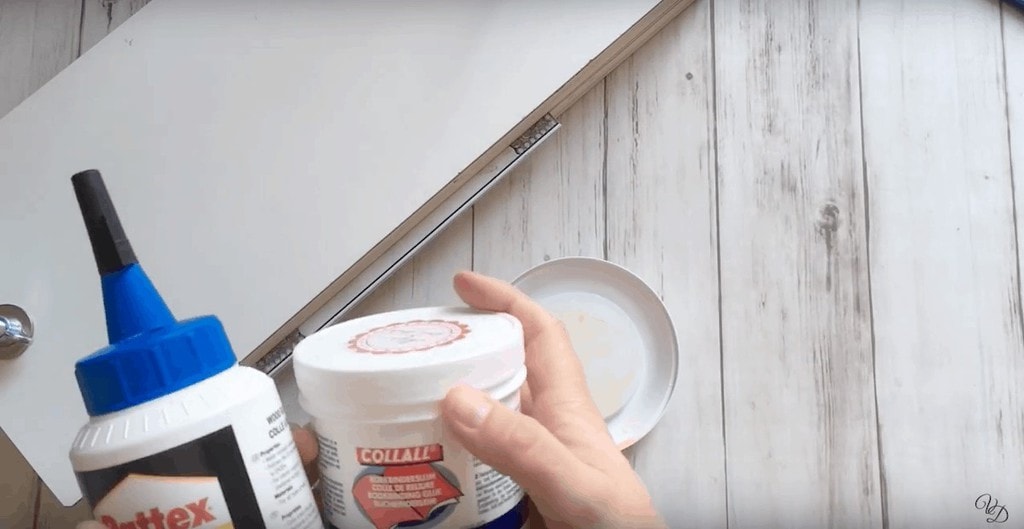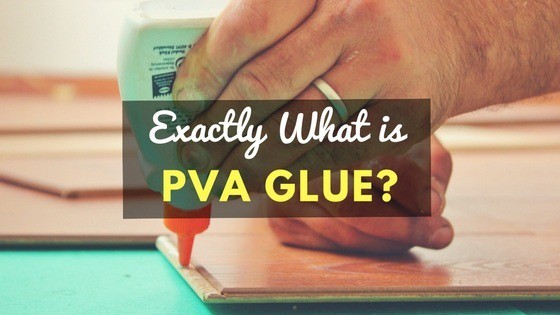
Table of contents
First things first. What in the world does PVA stand for? A little reading will tell you that it stands for polyvinyl acetate. These two big words simply mean that it’s a colorless, odorless material used in adhesives.
Ok, so now we have the hard stuff out of the way, let’s get the rest of the information out on the table.
Can’t I Just Use Elmer’s Glue?

Well, yes. You can use school glue or elmer’s glue in many cases for small crafty type projects. The exception is if you really need whatever you are gluing together to last for decades because others will see it you don’t want to use elmer’s glue. You may be thinking well what about polyurethane glue, super glue, or gorilla glue? It’s the same answer. It’s especially important to use PVA if you plan to sell your work.
For that, we’d recommend using more high quality Tran PVA Glue
Let’s talk about why.
As a matter of fact, there’s not much difference between PVA and Elmer’s and many people use the two names interchangeably. Most people do use Elmer’s unless they are artists who sell their work. Elmer’s tends to yellow over time and tends to break down after many years, resulting in things no longer being “glued” to each other.
Think about the crafts you made in kindergarten many years ago- that construction paper or those popsicle sticks eventually lose the adhesive qualities and come apart. This is because the glue used was Elmer’s or school glue rather than PVA.
PVA or polyvinyl acetate doesn’t break down.
Benefits of Polyvinyl Acetate Glue:
- Does not yellow over time.
- Remains flexible even when it dries.
- It will not break down.
- It will not affect the PH balance of papers or anything it comes in contact with.
- It is not toxic unless you ingest it, so DO NOT eat it!
- It does not give off nasty or harmful fumes.
- It dries clear.
What is PVA Glue Used For?
- Woodworkers use polyvinyl acetate to join pieces of wood.
- Carpenter’s PVA is actually yellow in color.
- Bookbinding -the glue’s flexible, strong bond allows for books to be securely bound without compromising the PH balance of the paper pages in books.
- Paper Adhesive- during paper packaging processes
- Envelope adhesive
- Wallpaper Adhesive
- Crafts
What Materials Can PVA Glue Be Used On?
Polyvinyl acetate glue is most commonly used to bind wood but this glue is also used in many situations that require flexible durability and substantial longevity.
PVA Glue was made specifically for application on porous surfaces. You do not want to use PVA glue on metals, plastics, or glass as PVA glue doesn’t easily bond to materials that lack texture. Basically if the glue cannot penetrate the material, it will not adhere.
People who bind books and make leather (they also call it hide glue) are big fans of PVA glue. This is because it bonds easily to paper and leather since they’re both porous materials. The glues compound resists breaking down the pH levels in the paper which results in preserving the whiteness of the page for a longer period.
Another material that PVA glue bonds decently to is cloth. However, this glue is no really intended for it. This glue is non-toxic and durable which makes it an extremely popular adhesive for many in-home applications or as a replacement for craft glue.
Pros & Cons of PVA Glue
PVA glue definitely has its pros and cons. Just like all the other adhesives out there, it has would variable results on different environments and materials.
The major pro of PVA glue is that it is an aliphatic polymer, which means that it doesn’t throw off any fumes if it gets wet. The glue is also inflammable making it perfect for indoor use. Also, if you get it on your skin it poses no threat, so if you’re someone who likes to work without gloves you definitely want to keep this in mind.
PVA glue is pretty thick, it can be thinned out for easier application. This ability makes the usefulness of PVA greater. For the same reasons which make this glue dilutable, cleanup is super easy as any excess or running glue you may have can easily be wiped away with water.
If you’re looking to do the opposite of dilution, the good news is PVA glue can do that as well! You can mix sawdust and PVA glue which creates a thick filler that you can use on gaps or cracks.
Unfortunately, unlike epoxy, PVA glue can only bond to porous surfaces. It does well at its specific job within reason, but if you’re looking for an adhesive that is more do-everything friendly you may want to keep looking.
I also want you to take note that you need to make sure that whatever workpieces you’re gluing together need to stay clamped until the glue is properly healed. You cannot expect the glue to hold the shape until it sets properly.
Types of PVA Glues
- PVA – Polyvinyl Acetate: This type of PVA glue is used for bookbinding, box sealing, and used in paints. It’s typically white in color and dries clear. It’s permanent and remains flexible after drying, rather than becoming brittle over time.
- PVA Wood Glue – Wood glue is a yellow-based glue, used for wood-to-wood joining. This type of glue absorbs into the wood you put it on. PVA wood glue holds even better if you clamp the wood while the glue is drying completely.
- PVA Water Resistant Glue– This glue resists mildew and moisture, which are two major benefits of using this particular type of vinyl acetate glue. Do not confuse water-resistant with waterproof PVA glue. This glue, if submerged in water, will not work as well. However, because this work is water-resistant, it can withstand inclement weather of all types. Titebond II and III are good choices for this type of glue.
Other PVA Glue Tips:
- Use PVA on porous materials.
- Excess glue cleans up with warm, soapy water
- PVA glue sets most effectively in an air-conditioned room
- PVA works best if clamped with some type of pressure while it dries.
- Most are not waterproof, but yellow dried PVA glue is a bit more water-resistant.
- White glue or white PVA glue has a longer shelf life than yellow
- Shop smart and don’t overpay for the PVA you purchase. Most PVAs are so similar to each other, so if it claims to be used solely for wood, or only on paper, it’s probably not accurate. Most PVA glue is interchangeable with others. What’s good for wood is probably fine for your scrapbook,
- Check out craft stores or home improvement stores for PVAC. You can also locate PVA glue in big, box stores like Wal-Mart, Target or Meijer.
Now that you have all the facts surrounding what PVA glue is and what all it’s used for, you can make a solid decision on which glue to use and for which specific projects you’ll use each for.

